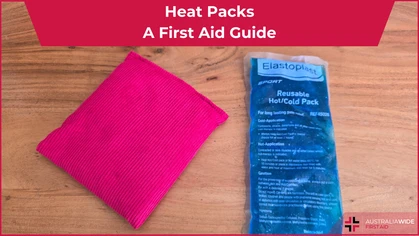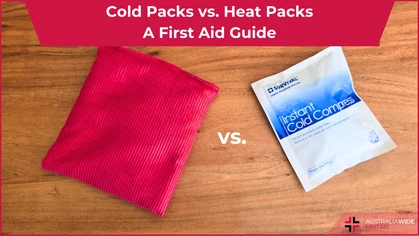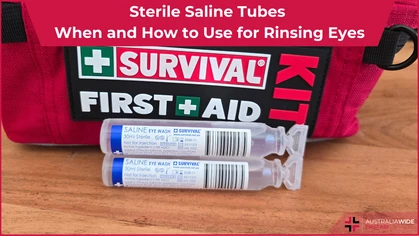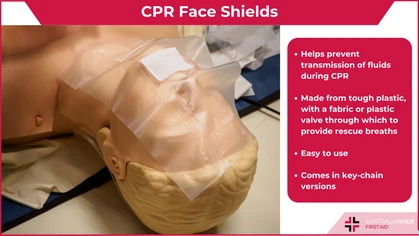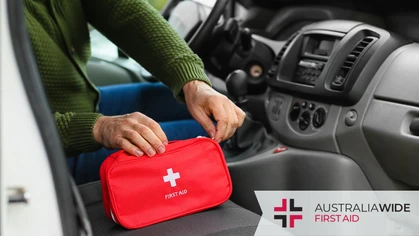How and When to Use a Cold Pack

First Aid Equipment
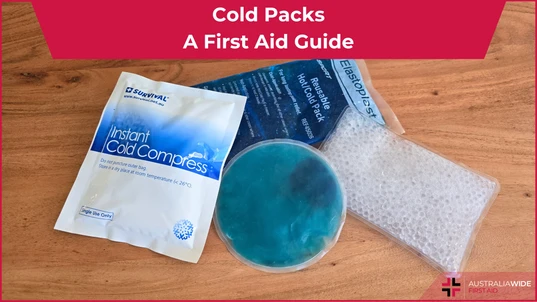 Cold packs are a fundamental tool in first aid for managing a variety of injuries and conditions.
Their proper use can significantly reduce pain, swelling, and promote faster recovery.
This guide provides a comprehensive look at how and when to use an ice pack effectively.
Cold packs are a fundamental tool in first aid for managing a variety of injuries and conditions.
Their proper use can significantly reduce pain, swelling, and promote faster recovery.
This guide provides a comprehensive look at how and when to use an ice pack effectively.
What is a Cold Pack?
A cold pack, also called an ice pack or cold compress, is a portable bag filled with liquid (could be water, refrigerant gel, or other) or ice, to provide cooling. A cold pack may be reusable or for use just once. Reusable packs are designed to be frozen, used, and frozen again. They should be replaced if the bag is punctured in any way, or the fluid begins to leak. A single-use cold pack, or instant cold pack, actually consists of a bag within a bag. The inner bag contains water, and when squeezed or twisted, it broken and dissolves the chemicals in the outer bag (or vice versa). This outer bag is usually filled with urea, calcium ammonium nitrate, or ammonium nitrate. When the chemical is dissolved by the water, it forms an endothermic reaction, where the pack absorbs heat from the surroundings. A single-use pack will not get as cold, or last as long, as a reusable pack. However, they are well suited for first aid kits.How Does a Cold Pack Work?
It’s important to note that using a cold pack will not speed up your healing or recovery time. It can, however, reduce your pain and discomfort. When an injury occurs, your body responds by dilating (expanding) the blood vessels to the area. This allows more blood to flow, which in turn increases the nutrients and cellular components needed for the healing process to begin. This flow of extra blood and other fluids results in the area swelling, which can increase localised pain and discomfort. By applying a cold pack to the area, you cause the blood vessels to constrict (tighten), reducing the blood flow, and thereby reducing the swelling. Cold packs also help to decrease pain signals.When to Use a Cold Pack
Acute Injuries Cold packs are most beneficial for acute injuries, which are sudden and typically caused by trauma. Examples include sprains, strains, fractures, and bruises. Inflammation Reduction For injuries that result in immediate swelling, such as after a fall or direct impact, applying an ice pack within the first 48 hours can help control and reduce inflammation, preventing further tissue damage. Pain Relief Cold therapy provides numbing effects that can significantly alleviate pain. This is particularly useful for muscle aches, minor burns, insect bites, and post-surgical pain. The numbing effect helps to interrupt pain signals to the brain. Fever Reduction In cases of high fever, ice packs can help lower body temperature. Placing ice packs on the forehead, wrists, or the back of the neck can assist in cooling the body down.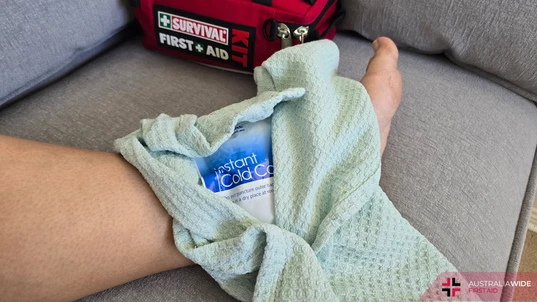
Always have a fabric barrier between the cold pack and the skin, such as a tea towel or clothing.
How to Use a Cold Pack
Prepare the Cold Pack- To make your own ice pack, fill a plastic bag with ice cubes.
- To use a single-use ice pack, locate the inner bag and squeeze it as hard as you can to release the contents and begin the chemical reaction.
- To use a reusable ice pack, ensure it has been frozen in advance.
- Wrap the ice pack in a thin cloth or towel to prevent direct contact with the skin, which can cause frostbite.
- Place the wrapped cold pack on the injured area.
- Leave it on for 15-20 minutes at a time, then wait at least two hours before repeating. Prolonged exposure to cold can cause skin damage.
- If the area being iced begins to feel numb, remove the cold pack, regardless of how long it has been there.
- Check the skin under the pack regularly for signs of frostbite, such as whiteness, numbness, or hardening of the skin.
- If any adverse reactions occur, remove the pack immediately.
- Rest the injured area to prevent further damage.
- Compress the area with an elastic bandage to help reduce swelling.
- Elevate the injured area above the level of the heart to minimize swelling.
Key Considerations
Timing The timing of applying a cold pack is critical. It is most effective when used immediately after an injury and continued for up to 48 hours. The cold pack will help reduce pain and swelling throughout the first 72 hours after an injury. Never delay seeking medical assistance, where needed, in preference of applying a cold pack. Frequency Cold should not be applied for more than 20 minutes at a time to avoid tissue damage. Repeat the application every 1-2 hours as necessary during the first 48 hours post-injury. This helps maintain the anti-inflammatory and pain-relieving effects. Protection Always use a barrier such as a cloth or towel between the cold pack and the skin to prevent frostbite. Direct application can cause skin and tissue damage. Hydration Stay hydrated, as cold therapy can sometimes lead to chills. Medical Advice Seek medical attention if there are signs of a serious injury, such as severe pain, inability to move the affected area, or if the condition does not improve with cold therapy.Conclusion
Cold packs are a versatile and effective first aid tool for managing acute injuries, reducing inflammation, and alleviating pain. Proper application and timing are essential to maximize their benefits and avoid complications like frostbite. By understanding how and when to use cold packs, you can significantly improve the initial management of many common injuries and promote quicker recovery.
Originally published at
https://www.australiawidefirstaid.com.au/resources/how-and-when-to-use-a-cold-pack
as part of the Australia Wide First Aid Articles Library
